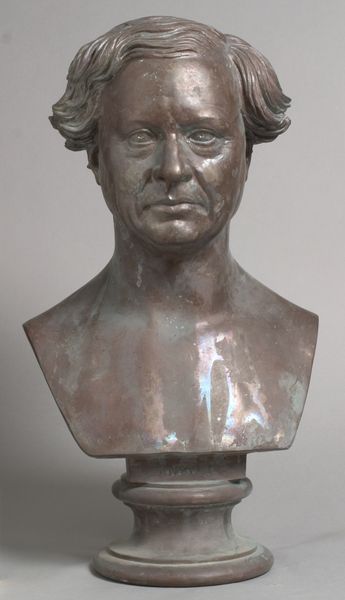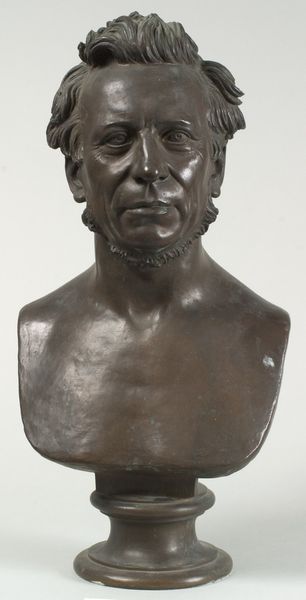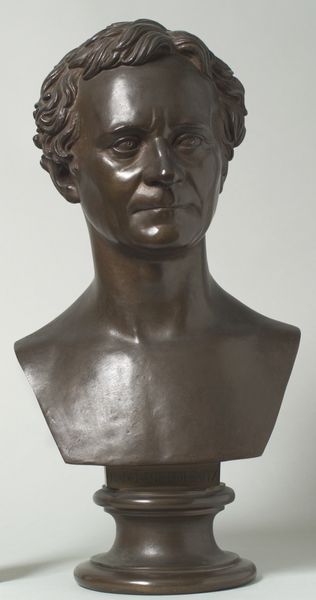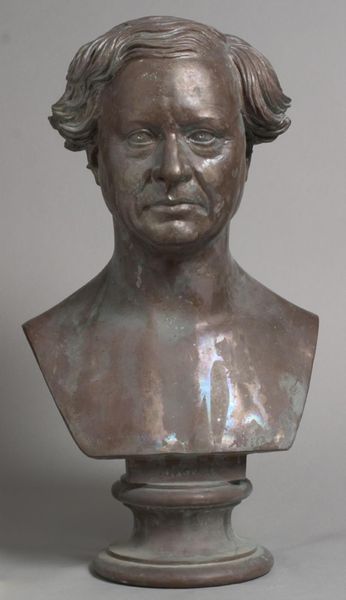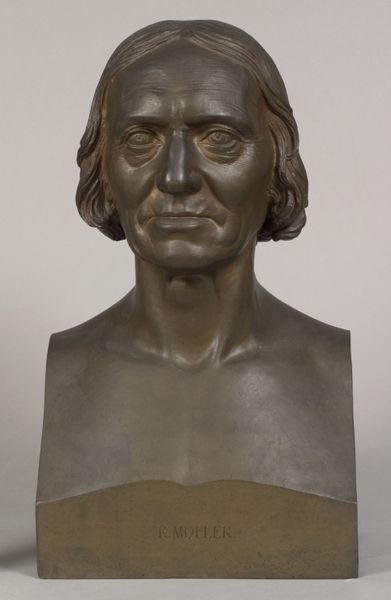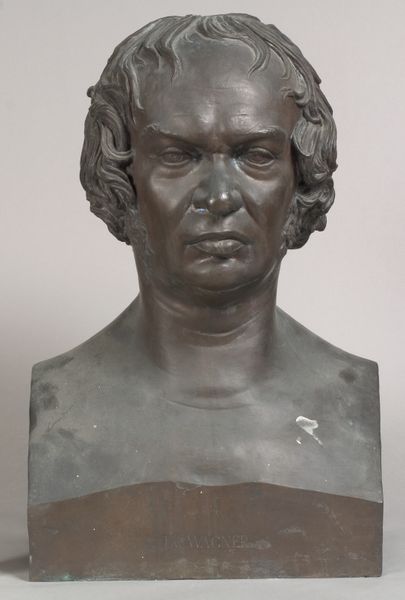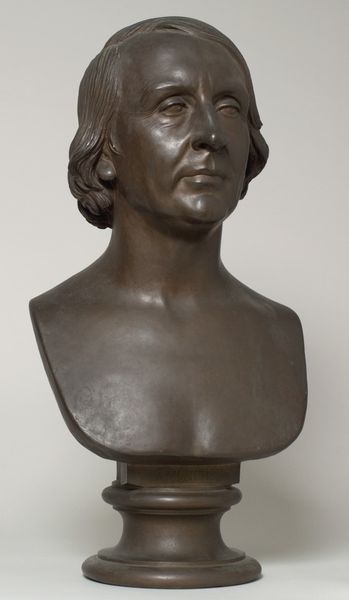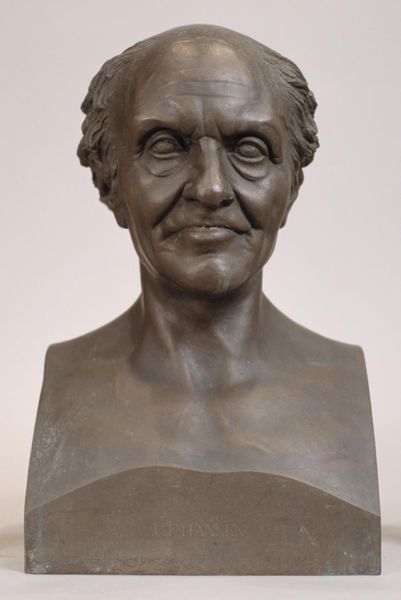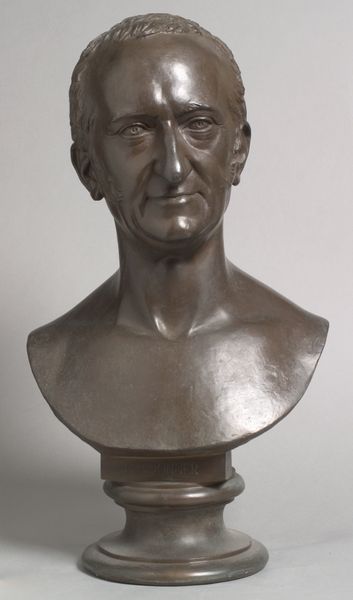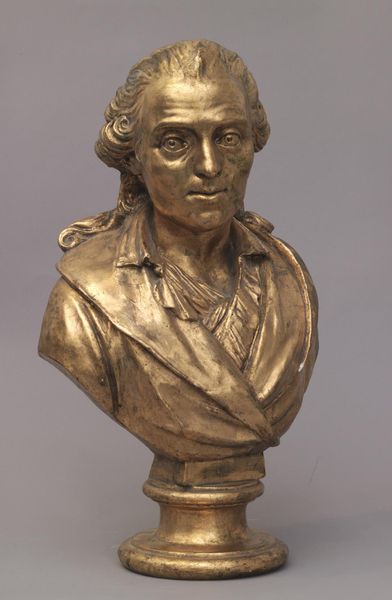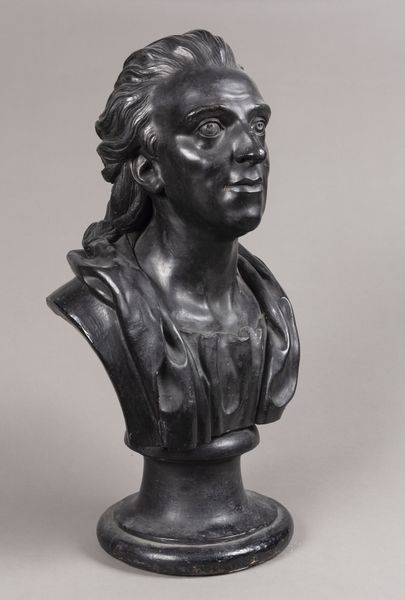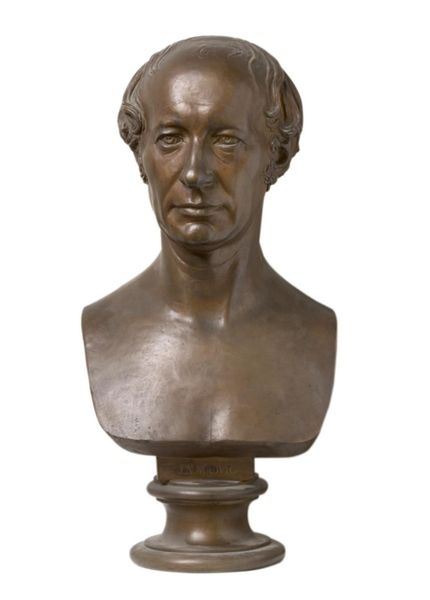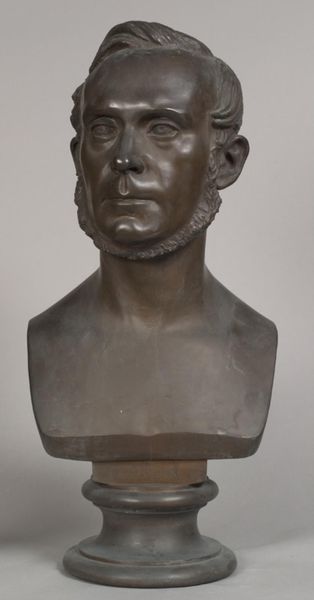
Dimensions: 60 cm (height) (Netto)
Curator: Standing before us, we have H.W. Bissen's 1867 bronze sculpture, "Departementschef C. F. Holm," currently housed here at the SMK. What strikes you most about this bust? Editor: The gravitas. Immediately, I’m drawn to the subject's slightly downturned gaze and the clear lines etched by age in his face. It suggests a lifetime of responsibility and perhaps, a touch of weariness, doesn't it? Curator: Absolutely. Bissen was a leading figure in Danish Neoclassical sculpture, so naturally he often received commissions to render leading citizens and prominent public figures into enduring likenesses like this one. The Neoclassical style elevated these people to near mythical levels. Editor: Right. The stern expression and somewhat formal presentation remind us that portrait busts of this nature function to immortalize an individual in a very particular, socially constructed manner. What is interesting is that while this work clearly draws upon the classical bust traditions with its focus on idealized naturalism, you can feel a clear trend to realism with a particular interest in this man’s face. It invites introspection. How did Holm’s contemporaries receive this depiction? Curator: Given Holm’s standing as a Department Head, the sculpture likely reinforced his authority and respectability within bureaucratic circles. Patrons like Holm sought to align themselves with the enduring legacy of classical ideals through these commissions. They sought to show power and integrity through this means. The reception was most likely tied to ideas about societal role, class and duty to King and Country. Editor: That’s fascinating. So, while rooted in classical ideals, it also served as a very tangible representation of societal power structures at play during that era, using a specific visual language to convey status. It gives a potent sense of what was culturally considered important to show and admire in an individual. Curator: Precisely. These weren’t mere decorations. They actively participated in defining and maintaining the established social order, not unlike public statues to royals that sprung up throughout Europe around that time. Editor: Reflecting on Bissen’s work, it strikes me how skillfully it merges the classical with the personal. It offers a powerful insight into the image-making and identity construction within 19th-century Danish society. Curator: Yes, the sculpture provides insight into the fusion of public persona and individual likeness. Bissen succeeded to portray both the man and the social structure which shaped his worldview.
Comments
No comments
Be the first to comment and join the conversation on the ultimate creative platform.
